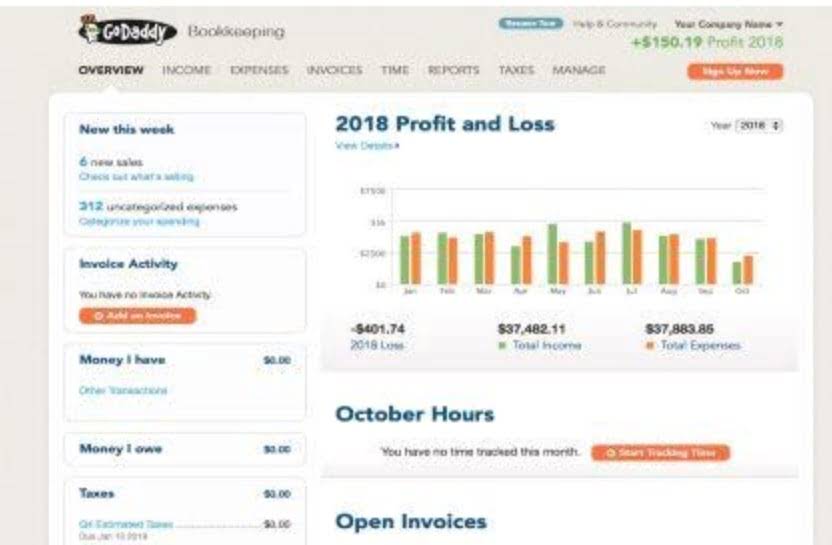Every business is allowed to devise its method and set of guidelines for preparing managerial reports. Financial accounting pays no attention to the overall system that a company has for generating a profit, only its outcome. Conversely, managerial accounting is interested in the location of bottleneck operations, and the various ways to enhance profits by resolving bottleneck issues.
In contrast, financial accounting must prepare reports for internal and external users (investors, lenders, regulators, creditors) and comply with GAAP standards. When managerial accounting focuses on internal consumption, there’s no need to follow a set of standards, whereas financial accounting is meant for internal and external consumption. Therefore, it must comply with a set of accounting standards, such as general principles, liabilities, revenue, equity, etc. Accounting is crucial in ensuring that a company fulfills its goals and updates strategies to its needs.
- Managerial accounting’s primary focus is on providing usable information for management and internal users while financial reporting focuses on providing relevant, verifiable information about the organization to outside users.
- The types of decision-making that management accounting is used to inform include financial decisions, marketing decisions, production decisions, resource allocation decisions, and so on.
- We’re firm believers in the Golden Rule, which is why editorial opinions are ours alone and have not been previously reviewed, approved, or endorsed by included advertisers.
These internal users may include management at all levels in all departments, owners, and other employees. For example, in the budget development process, a company such as Tesla may want to project the costs of producing a new line of automobiles. Although outside parties might be interested in this information, companies like Tesla, Microsoft, and Boeing spend significant amounts of time and money to keep their proprietary information secret.
It does not require financial statements to follow any particular set of accounting rules and is solely utilized internally. It records the daily transactions within the organization as well as between the organization and other external parties. The two most significant types of accounting are financial and managerial accounting. Financial accounting is essential to prepare accounts for people outside the organization, such as government agencies, banks, investors, and the public. Managerial accounting is helpful to the internal management of the organization’s daily work.
The primary objectives of both management and financial accountings include recording business transactions, recording revenues and expenses as they occur, as well as preparing Financial Statements. However, the primary objective of financial accounting is to provide information for use by external users while Management Accounting focuses on providing information for making better business decisions within the organization. Unlike managerial accounting–which follows internally created rules and processes–financial accounting activities and processes must follow the Generally Accepted Accounting Principles (GAAP). Securities and Exchange Commission, GAAP are the accounting standards, conventions and rules companies use to measure their financial results including net income and how companies record assets and liabilities. Financial reports provide quarterly and yearly financial data detailing profitability and efficiency to parties outside of an organization. Unlike managerial reports, financial reporting focuses on proven information and accurate data that is aggregated, concise and generalized rather than specific and technical.
Difference Between Financial and Management Accounting
Franklin University offers a 100% online bachelor’s degree in accounting designed to help working adults earn their degrees. Franklin’s accounting instructors teach industry best-practice skills in a highly structured yet flexible program. The curriculum prepares professionals to excel in the competitive and growing accounting job market. La Salle maintains responsibility for curriculum, teaching, admissions, tuition, financial aid, accreditation, and all other academic and instruction-related functions and decisions. The nature of the information in all of the articles is intended to provide accurate and authoritative information in regard to the subject matter covered. The Ascent is a Motley Fool service that rates and reviews essential products for your everyday money matters.
Such reports may include audited financial statements that help investors and analysts decide whether to buy or sell shares of the company. The key difference between managerial accounting and financial accounting relates to the intended users of the information. Managerial accounting information is aimed at helping managers within the organization make well-informed business decisions, while financial accounting is aimed at providing financial information to parties outside the organization. With financial accounting, accounting reports must follow GAAP and IFRS standards, since the primary users are external. With managerial accounting, accounting reports are prepared for internal users and provide valuable information to set goals and manage the business. Since the company relies on this information, there are not any regulations or standards that must be followed in preparation.
Standards
However, the information provided by financial accounting is primarily historical and therefore is not sufficient and is often synthesized too late to be overly useful to management. Managerial accounting has a more specific focus, and the information is more detailed and timelier. Managerial accounting is not governed by GAAP, so there is unending flexibility in the types of reports and information gathered. Managerial accountants regularly calculate and manage “what-if” scenarios to help managers make decisions and plan for future business needs. Thus, managerial accounting focuses more on the future, while financial accounting focuses on reporting what has already happened.
Create a Free Account and Ask Any Financial Question
Managerial accounting is a type of accounting that focuses on meeting the needs of internal stakeholders at a business. Responsibilities can include completing internal-facing tasks and creating the reports necessary to operate a business, such as monitoring and reporting on costs, sales, spending, budgets and internal financial trends. People in this type of accounting are focused on the future, and will often run “what-if” scenarios for company leadership to help them make decisions https://simple-accounting.org/ to ensure the business stays profitable. On a day-to-day basis, people in managerial accounting will follow internal rules and best practices to accomplish tasks. Both financial reports and managerial reports use monetary accounting information, or information relating to money or currency. Financial reports use data from the accounting system that is gathered from the reporting of transactions in the form of journal entries and then aggregated into financial statements.
The following day, you and your staff create a plan for bringing in more revenue, starting with expanding sales territories. If you’ve always thought that managerial accounting, sometimes referred to as management accounting, and financial accounting were the same type of accounting, you may be in nonprofit statement of cash flows for a surprise. Financial accounting involves the preparation of general-purpose financial statements used by various users in making informed decisions. Managerial accounting almost always reports at a more detailed level, such as profits by product, product line, customer, and geographic region.
How Are Managerial and Financial Accounting Careers Different?
Financial accounting does have certain applications within an organization, but its primary goal is to provide information to others who are not affiliated with that organization. The final accounts or financial statements created via the process of financial accounting are intended to reflect the business performance of the company as well as its current and future financial health. The financial accounting course covers basic accounting language and concepts, recording financial transactions, preparing financial statements, reporting and analyzing operating income, operating assets and owner financing.
These standards are developed by the International Accounting Standards Board (IASB). IFRS is important because it provides uniformity and comparability in financial statements across international borders. IFRS establishes uniform standards that must be followed by all companies that report under it. Similar to GAAP, IFRS requires companies to disclose their financial information in a clear and concise manner. Both sets of standards are important in ensuring the reliability of financial information. So, managerial accounting reports deal with the numbers of the day and estimates for the future.
Managerial reports include daily and weekly budgeting reports as well as proprietary reports detailing operational efficiencies. These highly detailed, technical reports often include estimates and projections, in addition to historical and accurate data. Managerial accountants use this data to support company expenditures and track deviations from budgets and actual performance results. While many businesses use a combination of managerial and financial accounting, only the financial statements produced using financial accounting processes are required to be audited by an independent CPA firm.
If you want an overview of an entire business or organization, you will need to study the financial accounting reports. The financial accounting reports are of more interest to people outside of the organization. Some of the internal reports would be about inventory, purchase, profits for each individual product, and reports that are aggregated by product, customer, or geography. It is only when some aspect of the business is to be studied in depth that the same person would study both managerial vs financial accounting reports. Managerial accounting is generally considered to be easier than financial accounting. The main reason for that is that managerial accounting mainly involves budgeting and forecasting, and it’s meant for internal use.







